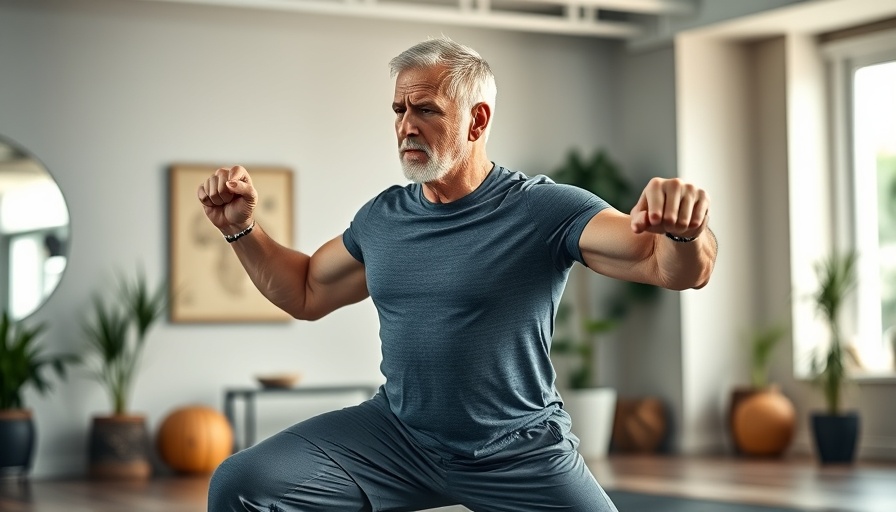
Reclaim Your Youth: The Power of Strength Training
As we age, the way we approach fitness can make all the difference in how we feel. Have you ever wished you could magically turn back the clock? While we can’t reverse time, engaging in regular strength training can help you feel years younger—a fact endorsed by fitness experts like Charles Toliver, a certified trainer at Planet Fitness. With five simple moves, you can support your joint health, boost muscle mass, and shake off the stiffness common with aging.
Is Strength Training the Fountain of Youth?
The concept of a "fountain of youth" has intrigued humanity for centuries, but according to modern fitness science, strength training might just be the closest thing we have. Research suggests that muscle mass is closely linked to longevity. As Toliver points out, those who don't engage in strength workouts are at risk of losing muscle and collagen as they grow older, making them susceptible to chronic conditions such as diabetes, heart disease, and osteoporosis. So, let’s explore some key strength exercises that can make you feel like you’re in your twenties!
Start With Mobility Work: Your Body's New Best Friend
Before jumping into strength moves, it’s essential to start with mobility work. This initial step not only activates your muscle groups but also enhances your body's circulation and balance. "Mobility work preps your body for heavier lifts, reduces injury risk, and keeps those joints strong," claims Toliver. Imagine moving freely and confidently, just like you did in your prime!
Mastering Tempo: The Art of Controlled Movement
Next, let’s talk about tempo. Have you ever rushed through a workout? Slowing down your repetitions isn't just a suggestion; it's crucial for building control and maximizing results. "The mind-muscle connection significantly improves by focusing on the tempo of your reps, which leads to healthier joints and faster visible results," asserts Toliver. When you take the time to really engage your muscles, you increase your strength and confidence.
The Core of It All: Basic Movement Patterns
To truly harness strength, focus on fundamental movement patterns: hinges, pushes, pulls, squats, and carries. These exercises aren't just about lifting weights; they mimic day-to-day activities! Engaging in these patterns increases not only physical strength but also boosts your coordination and posture. Toliver emphasizes that engaging your obliques through torso twists enhances spinal mobility, which is vital as we age.
Stretch It Out: Keep Your Body Limber
Don’t forget your post-workout stretching! It might seem simple, but static stretching significantly contributes to recovery. The impact is profound: less soreness, improved joint flexibility, and overall agility. As Toliver notes, "Consistent stretching will keep you feeling agile, warding off stiffness and aches that commonly accompany aging." Finding just ten minutes to stretch post-exercise can greatly enhance your wellness routine.
Prioritize Rest: Recharge for a Younger You
While it might seem counterintuitive, optimizing your sleep routine is another massive step towards feeling youthful. Quality sleep is integral for muscle repair and hormonal balance, as Toliver points out. Without proper rest, your body can’t give its best in workouts, ultimately accelerating aging. Aim for seven to eight hours each night to recover effectively from those strength sessions!
Take Action: Start Your Transformation Today!
Feeling twenty years younger is within your grasp! By incorporating these five strength moves and prioritizing your mobility, tempo, foundational movements, stretching, and rest into your routine, you can reap the benefits of strength training. Your journey doesn’t have to be overwhelming; begin with small daily wins. Turn back the clock on how you feel by embracing strength training!
 Add Row
Add Row  Add
Add 







Write A Comment